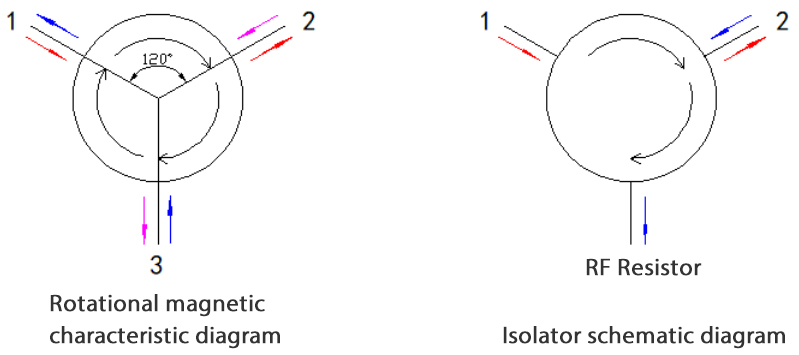What is RF circulator & What is RF isolator?
What is a RF circulator?
The RF circulator is a branch transmission system with non reciprocal characteristics. The ferrite RF circulator is composed of a Y-shaped center structure, as shown in the figure. It is composed of three branch lines symmetrically distributed at an angle of 120 ° to each other. When the external magnetic field is zero, the ferrite is not magnetized, so the magnetism in all directions is the same. When the signal is input from terminal 1, a magnetic field as shown in the spin magnetic characteristic diagram will be excited on the ferrite junction, and the signal will be transmitted to output from terminal 2. Similarly, the signal input from terminal 2 will be transmitted to terminal 3, and the signal input from terminal 3 will be transmitted to terminal 1. Due to its function of signal cyclic transmission, it is called an RF circulator.
Typical use of a circulator: a common antenna for transmitting and receiving signals

What is a RF isolator?
A RF isolator, also known as a unidirectional device, is a device that transmits electromagnetic waves in a unidirectional manner. When the electromagnetic wave is transmitted in a forward direction, it can feed all the power to the antenna, causing significant attenuation of the reverse waves from the antenna. This unidirectional transmission characteristic can be used to isolate the impact of antenna changes on the signal source. Structurally speaking, connecting a load to any port of the circulator is called an isolator.
Isolators are typically used for protecting devices. In RF power amplifiers in the communication field, they mainly protect the power amplifier tube and are placed at the end of the power amplifier tube.
Post time: Jul-08-2024





